There are only a few cities in the world which can boast of being a modern, industrial city as well as a city where one can experience the ancient culture of the country at the same time. A city which makes parts of airplanes, currency notes and at the same time hosts the sacred Kumbha Mela or Kumbh Mela or fair which takes place every twelve years on rotation basis in four Indian cities, Nasik is one of them. The city of Nasik in the state of Maharashtra, India can boast it all. It’s a true ancient city with a modern outlook.
So when an opportunity arrived to visit Nasik, an ancient holy city yet modern in every possible sense, this winter, that too, a road trip I could not refuse. It was going to be my longest road trip, 2500 km round trip so far. Nasik was in mind for very long and the detailed plan was already there, well almost! Making detailed itineraries to different places is one of my favorite pastimes So it was all there, the only thing required was to manage seven days which I could manage only during the last weeks of 2017. So once the countdown began everything started falling into the place- the car was checked and serviced few days before the trip, packing done, everything checked and the journey started early morning, a couple of days before the Christmas. Soon my car hit the NH-66. Our destination for the day was Kolhapur, around 545 km from Mangalore and reached there around 630 pm. Drive was along the coast for most of the time and then winding roads of western ghats. It was beautiful. The original plan was to spend the night there and indulge in the half-day exploration of the city in the next morning before heading towards Nasik. But destiny had something else in store for us that day! No rooms were available in any hotels at Kolhapur. After searching for almost three hours I gave up and decided to have quick dinner at some restaurant and resume driving till I could. But after some 15 km from Kolhapur, we finally managed to get rooms in a hotel along the highway. So 1st day of the road trip was finally over at 11.30 pm. Now we could finally crash after a very long day. Next day’s travel was event less, through fine stretches of highway and by evening we covered remaining 450 km and reached our hotel.
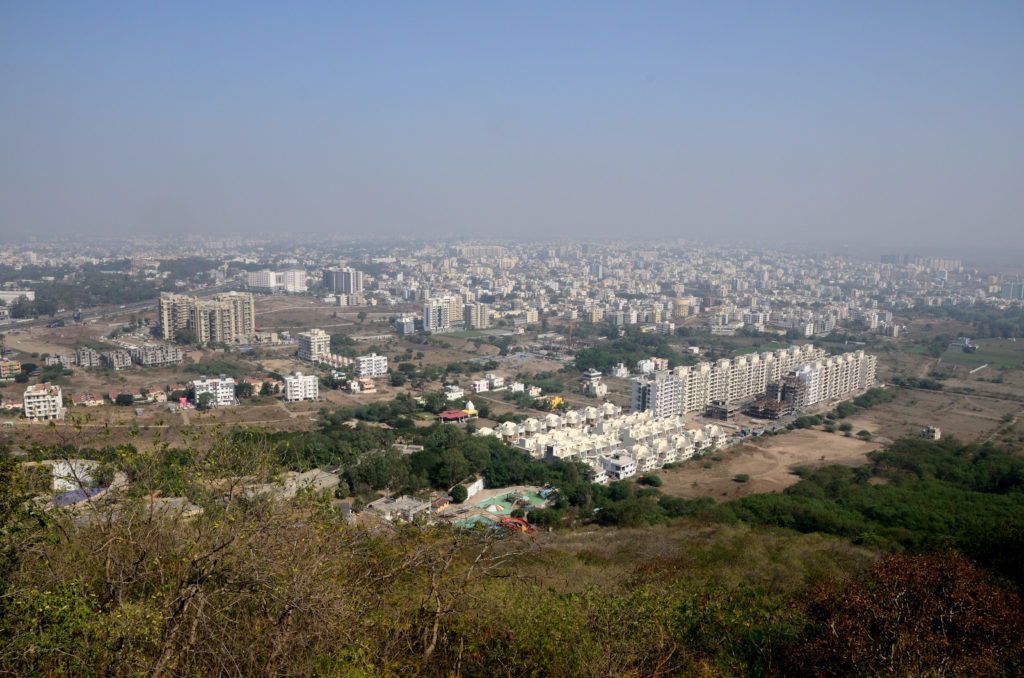
Once in Nasik, one has plenty of options to explore the city. I started my Nasik trip by visiting Traymbakeshwar temple dedicated to Lord Shiva, just 28 km from Nasik city. Being one of the twelve Jyotirlingas, Traymbakeshwar attracts a large number of pilgrims every year. Situated in the foothills of Bramhagiri Mountains, the temple in its present form was built by then Peshwa Baji Rao, the Maratha General during the 17th century. This black stone temple has appealing architecture. Visiting this ancient temple surely recharges the soul of a believer. This is also the place where river Godavari, the longest river in Indian peninsula originates from a Kunda or a sacred pond called Kushavrata within the temple premises. By seeing this humble Kunda, it is difficult to believe that this is the source of the second longest river in India after the river Ganga and also known as Dakshina Ganga or Ganges of South. One full day is required to explore this place as there are many temples situated in the surrounding areas. And yes, one small tip, don’t forget to taste fresh sugarcane juice from the nearby market area, it’s refreshing after exploring the entire temple premise and cheaper too, just Rs.10 for a glass!
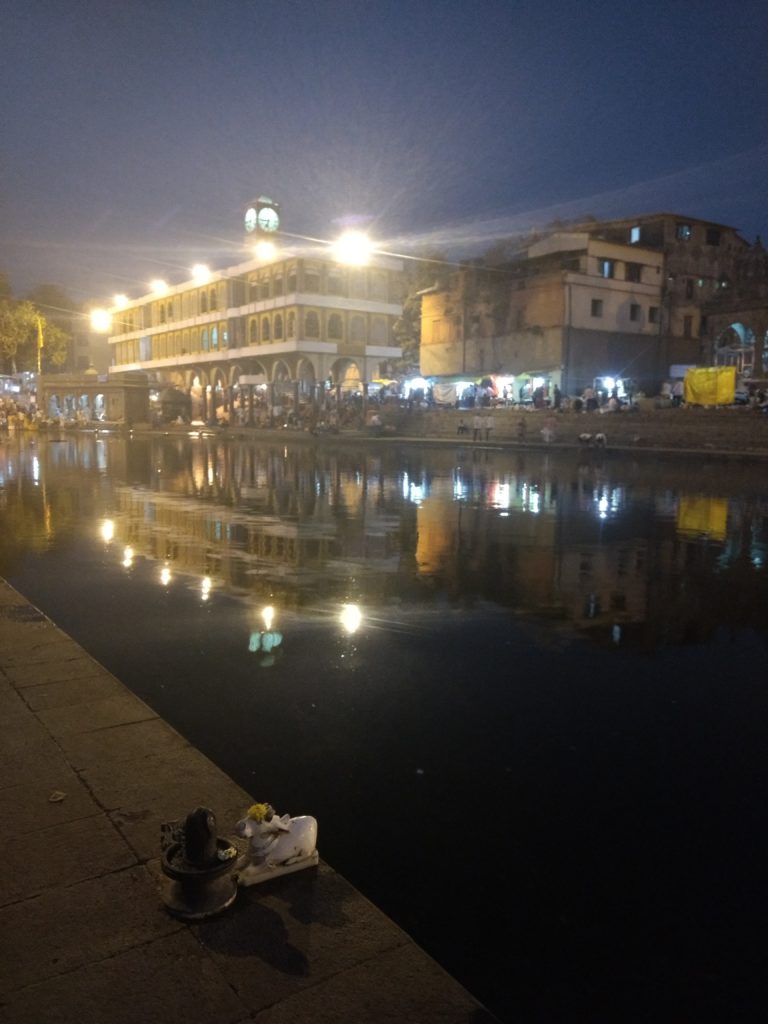
By the time we finished visiting Tryambakeshwar, it was almost 5 pm. So our next destination was Ghats of river Godavari near Kalaram temple, another ancient temple, dedicated to Lord Rama. After visiting this temple we straight away went to banks of river Godavari, it was almost dark and evening prayers from different temples on the banks of river Godavari just started. It was a surreal moment. The smell of incense sticks, sweet sound of musical instruments playing with the sound of prayers from the nearby temples was just the calming effect one could yarn for; after a full day of temple hopping. We spend quite a bit of time here, just sitting on the steps of a temple on the river bank. The excellent evening tea, which we had quite a few times after the evening prayers just added to this experience. Our trip to Nasik was not a pilgrimage to the real sense but having visited these holy places on the very first day of our trip was fulfilling and the just the kind of start we wished for.
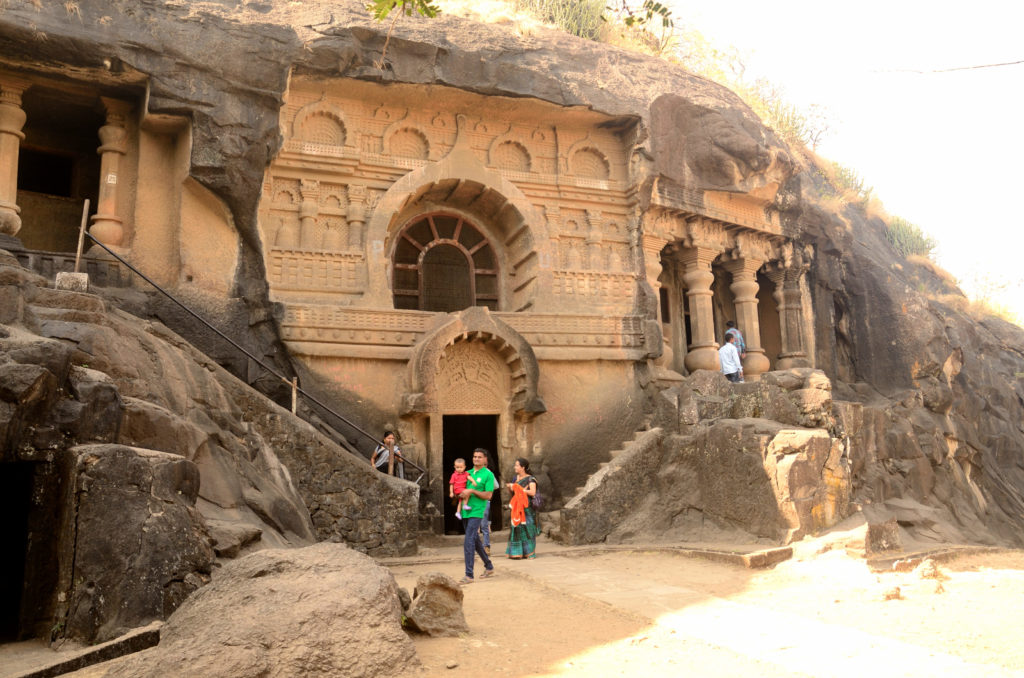
The day one at Nasik was spent in finding the soul of Nasik city which somehow lives in the lanes and bye-lanes of the old part of the city, whether we were able to meet it- well I don’t know but all of us were feeling fresh and very excited to start the day. Our first destination for the day was the Pandavleni caves, no; it has nothing to do with Pandavas of Mahabharata! It is a group of 24 caves devoted to Buddhism which were carved out of rocks atop Trirashmi Mountains. These caves were built between 1st century B.C and 3rd Century A.D, but some were built up to 6th Century A.D. There are around 200 steps to reach the caves. The climb is tiring, especially if you are climbing late in the day when the sun is high but the whole effort is worth it. As the climb ends, a 2000 years old fascinating world of Viharas and Chaityas unfolds in front of one’s eyes in the grandest manner. At that moment all the efforts one puts up during the climb suddenly starts making sense! These caves are dedicated to Buddhism and are beautiful and maintained well. The caves are marked from 01 to 24 and are of different sizes and display intricate carvings. Once here one can really wonder how these hard rocks were carved into beautiful caves with so many inscriptions in ancient Pali language and that too with the raw tools of that period. The cave system here was known for its intricate water management system by carving of rocks carefully.
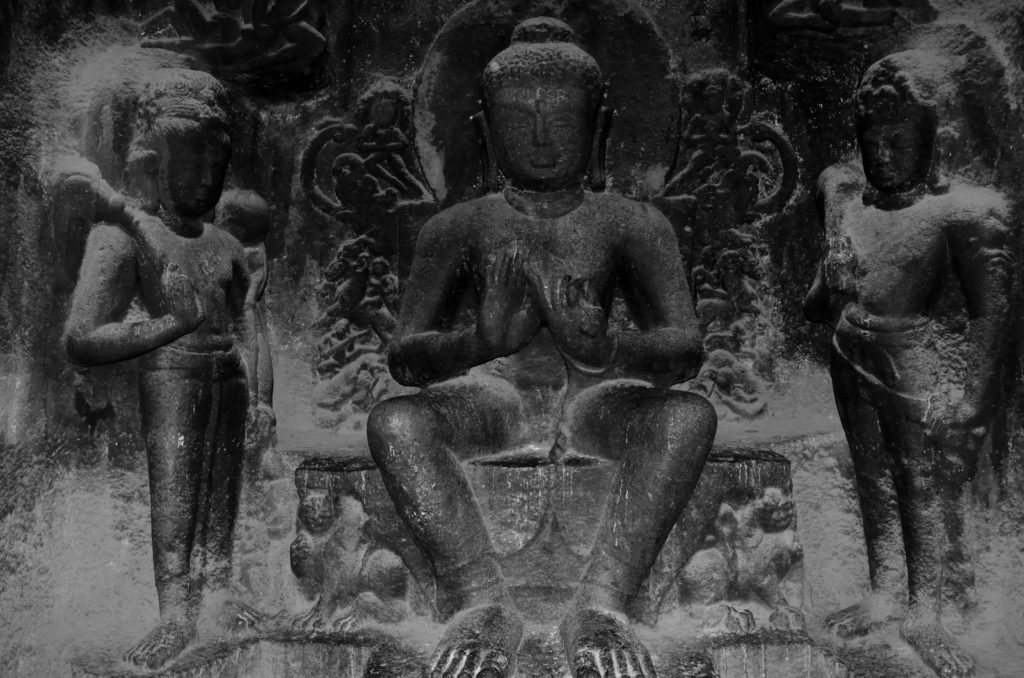
Our initial plan was to make it a quick visit but engrossed by the beauty of the place we ended up spending more than three hours at the top. The place not only offers a piece of history but also presents a bird’s eye view of Nasik city and I think it is the best possible place to see whole of Nasik city. I wondered if I can be there at night, just to capture the city lights with my lens but alas! the place closes for visitors at 5.30 pm. Well, not all wishes can be fulfilled!
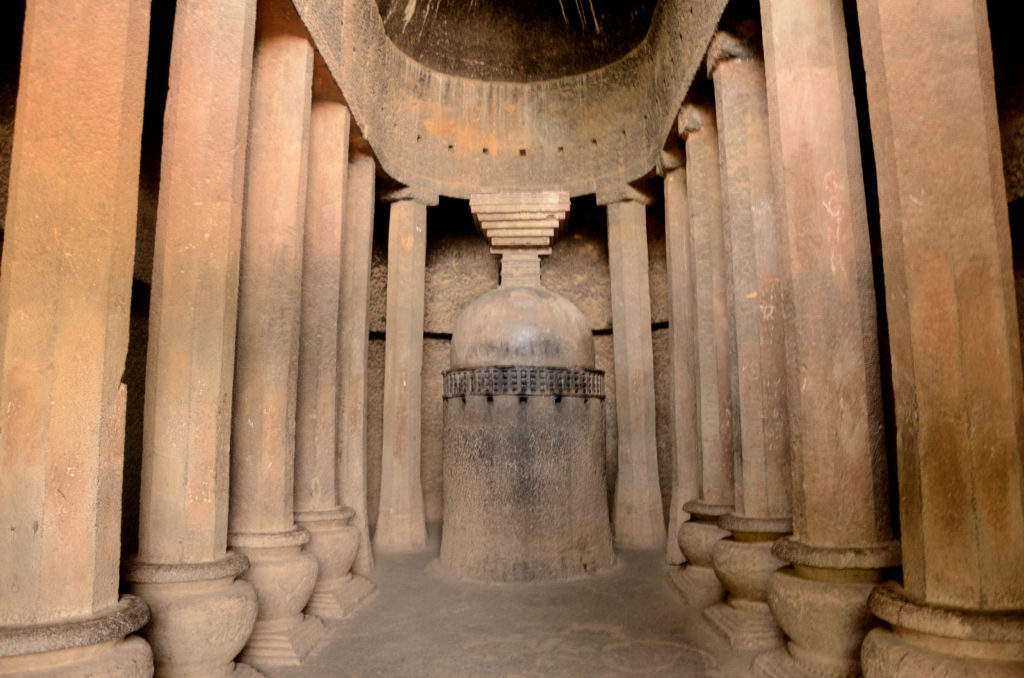
After spending 1st half of the day exploring the Pandavleni caves, while coming down someone suggested visiting the nearby Jain temple. It was just 04 km from the base Trirashmi Mountains. This was not planned but I think traveling is all about such little twists and turns! So I turned the car towards the Jain temple and wow what a place it was. Built by red sandstone, the architecture was simply superb and stone works somewhat resembled the famous Dilwara temples of Mount Abu. The best part was the chance of having lunch, purely in Jain style at the temple itself. In our country, Jain style lunch is known for its pure vegetarian delights. After visiting the temple we purchased lunch coupons at Rs. 80 each for the buffet lunch and what a treat it was! After having sumptuous lunch we spend some time under the cool shades of trees planted there and I had a quick power nap there! Well, climbing up and down to Pandavleni caves had finally taken its toll and I was not alone!
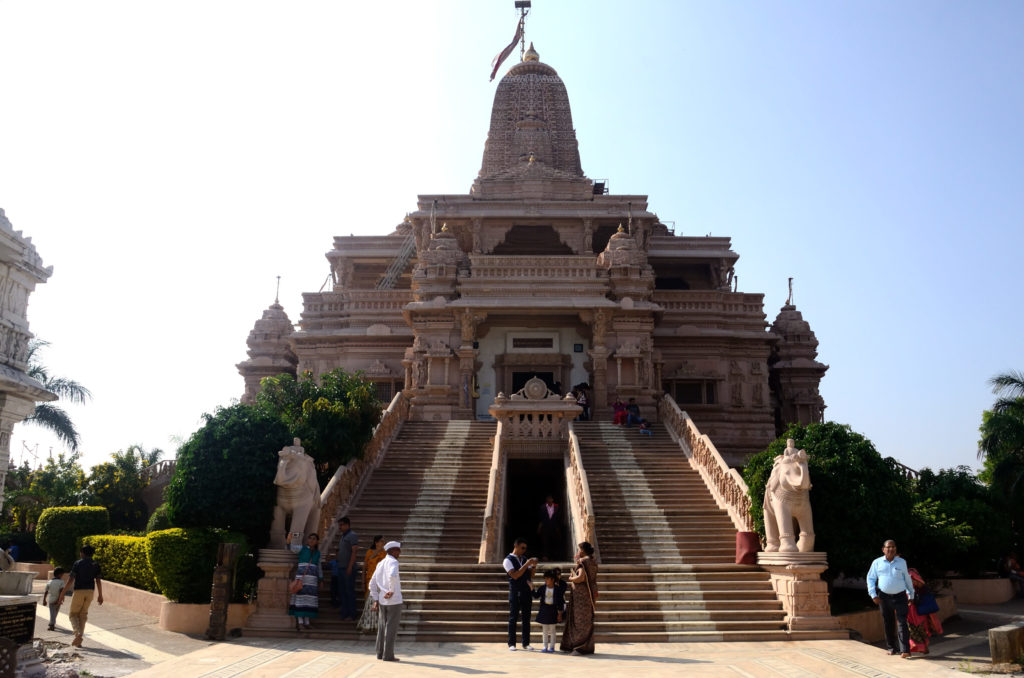
It was around 4.00 pm when we started to our final destination of the day the Sula Vineyards. Nasik is known for its vineyards; quite a few vineyards are spread around Nasik. Sula vineyard is perhaps one of the more popular names in Indian Wine Industry. It is situated 15 km to east from the heart of Nasik. By the time we reached this vineyard it was 4.30 pm in the evening and in the golden light of the setting sun, the already beautiful winery surrounded by vineyards, empty wine casks placed tastefully on the way to the main building was looking just awesome.
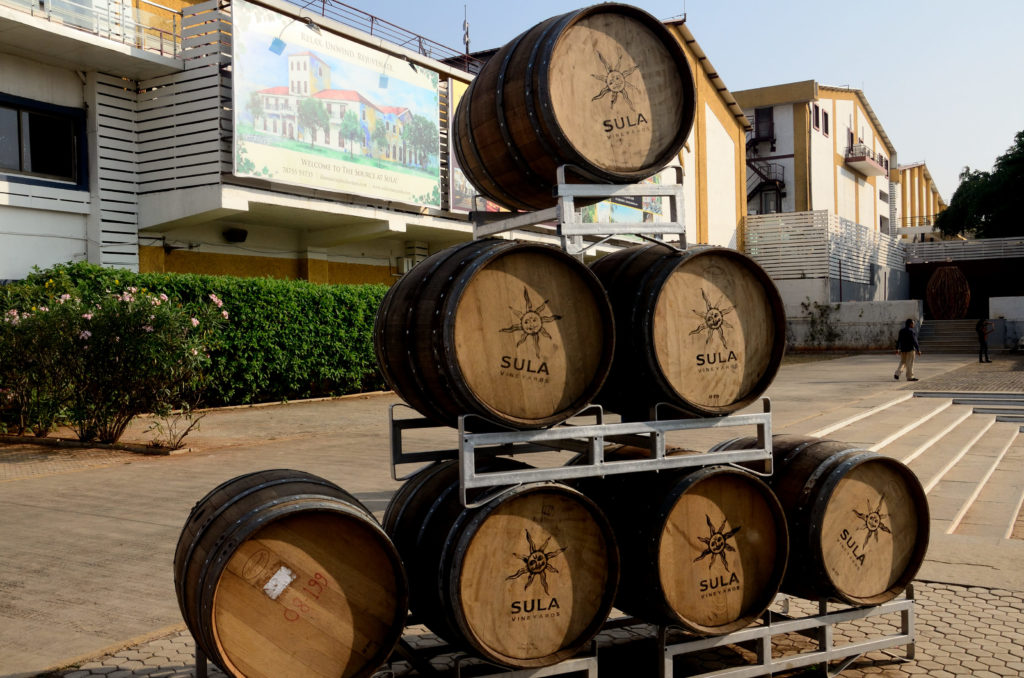
Inside the main building one can take the guided tour of the winery where one gets chance to see how the wine is made and almost everything related to the making of wine and of course, one can taste a variety of wines at the end. There is also a gift shop and a wine shop on the premises. There are two eateries inside its premises, one is Little Italy, as the name suggests serves traditional Italian food and the other one is Soma, satisfying the Indian taste buds. Both this restaurants offer the panoramic view of rolling vineyards. It’s a very romantic place to spend the day. It has nice places to stay also but we were short of time for this, may be next time! But having some fine wine right at the vineyard does not require much time! We had the Brut Tropicale, a sparkling wine for the evening at their nicely designed, relaxed sitting area watching the slowly fading sunlight over the vineyard. May be it was the wine or the environment; the setting looked just perfect to end the day.
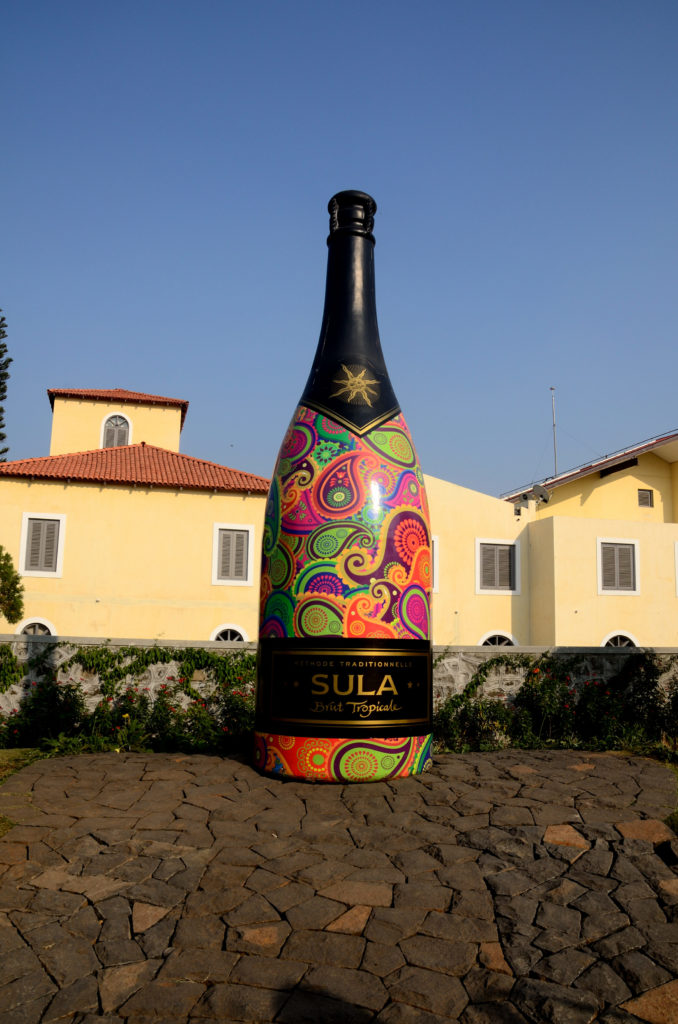
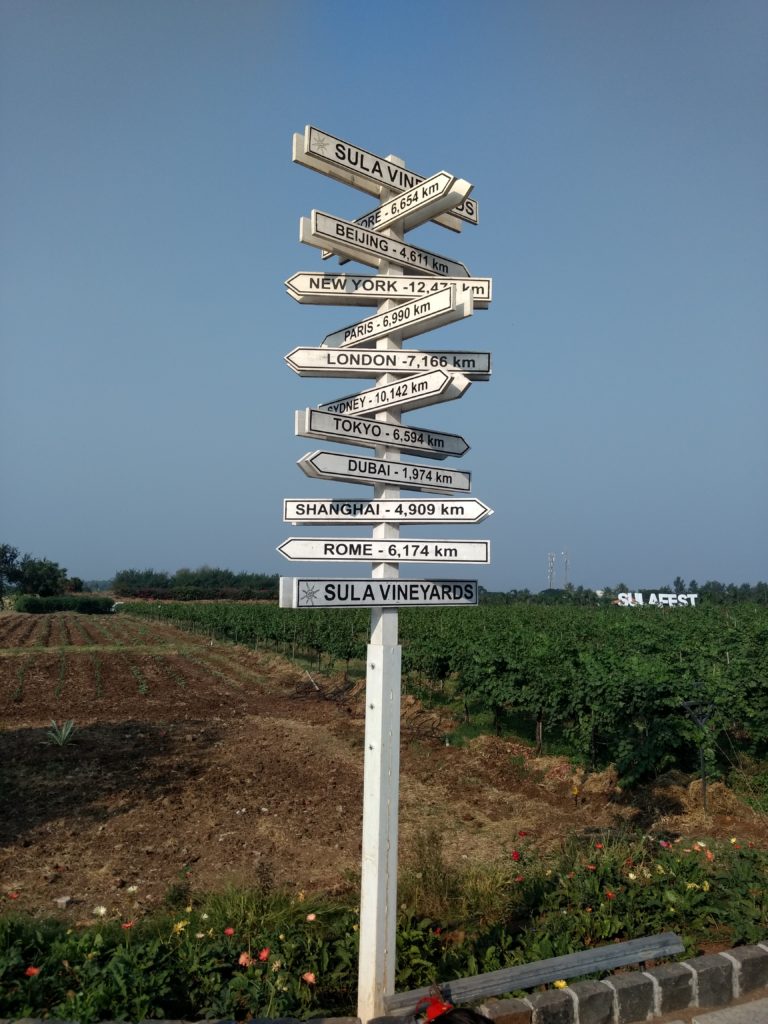
How to reach:
Nasik is well connected by all major metros of the country by railways and roads. The conditions of the roads are very good. Nearest Metro is Mumbai (170 km) and has a major international airport.
Stay & Food:
There is no shortage of hotels suiting every budget. But during the festivals and holydays, especially during Hindu festivals like Sivaratri it is advisable to pre book hotels, just to avoid hassles. Being a modern city Nasik offers all types of food but do taste local Maharashtrian foods like Paw Bhaji, vada paw etc. They are easily available everywhere and mouth watering.
Network connectivity:
Nasik offers excellent 3G/4G connectivity from all major telecom operators in the country.
